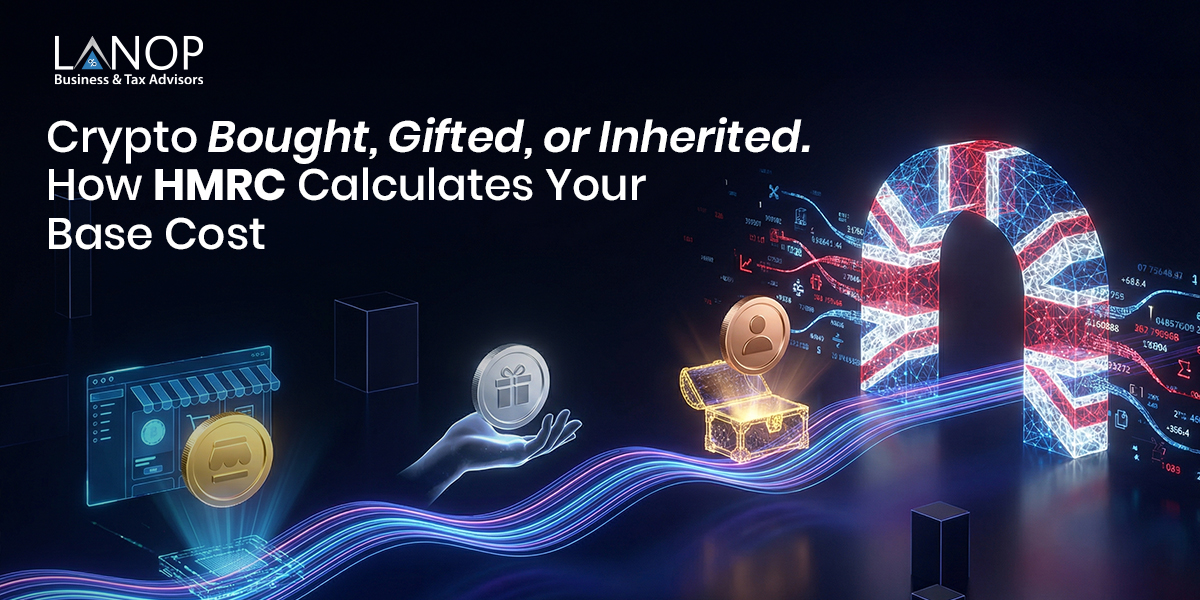
A New Era of Financial Responsibility
Lots of people now use crypto; it’s not just something for a few enthusiasts anymore. In the last twelve months, people in the United Kingdom really started using cryptocurrencies. A new report shows crypto ownership jumped from 18% to 24% in the UK during 2025. This big increase shows a real change in how people think about using money online. The Financial Conduct Authority agrees, reporting that twelve percent of people in the UK had cryptocurrency as of August 2024. This number grew from ten percent in 2022. More people use cryptocurrencies, so many now find it hard to handle their digital money well, especially when it comes to taxes.
Tax agencies examine digital currencies more closely as they become more common. The tax authority is updating how it deals with things like cryptocurrencies. It’s letting people know that trying to avoid reporting these assets will no longer work. Starting January 1, 2026, the tax authority will require companies offering crypto services in the UK to gather information about their users, including details of transactions. They must share this data with the tax authority for users who pay taxes in the UK or other countries working with this system. Now, people really need to keep a careful track of everything for their taxes, and also fully grasp where they stand with them.
This explanation simplifies how the UK tax authority, HMRC, figures out your original purchase price for cryptocurrency. Figuring out your original cost for crypto, no matter how you got it, is the starting point for any tax calculation. It’s important to follow the rules, keep your finances safe. This article explains crypto taxes for people in the UK, using simple language with easy instructions. It helps you handle your taxes easily, feeling sure about what you are doing.
HMRC’s Foundational Principle: Crypto is Property, Not Currency
UK tax rules for cryptocurrency center on one main idea from the tax authority. They treat cryptocurrency as property, instead of like normal money. This important difference shows there isn’t a special tax just for digital currencies. Currently, regular tax rules, mostly those for profits from selling assets or regular earnings, cover crypto dealings depending on what they are or how people use them.
People who buy or sell cryptocurrency for their own investments generally pay a tax on the profits they make. You might owe capital gains tax when you sell crypto for regular money, trade it for different crypto, use it to buy things, or give it away to someone who isn’t your husband, wife, or partner. When you sell something, your profit or loss is the amount you receive for it minus what you originally paid, a process explained further in this overview of crypto disposal rules.
Crypto holdings could face taxes like regular income. This happens when you get digital currency as payment for work, not from selling an investment. You can earn crypto through activities like digging for new coins, holding coins to support a network, receiving free tokens, or getting paid with crypto for work you do. Because taxes apply twice, it’s important to know exactly what each financial deal involves for correct records, an area where many seek support with HMRC crypto classifications.
Rules are shifting quickly, and tax authorities, financial watchdogs now act more directly. More people in the UK now own or use cryptocurrencies, so more people have taxes to sort out. Because of this, the tax authority will start strictly enforcing rules. One new rule, beginning in 2026, requires service companies to share information. As more people start using cryptocurrency, better record-keeping is happening. This connection shows that millions of new owners must follow the rules correctly; it is not optional. Keeping track of your cryptocurrency is now essential. Without good records, you may face taxes from past years, along with significant fines.
Base Cost Demystified: The Foundation of Every Gain or Loss
Figuring out your crypto taxes always starts with the original price you paid. It shows the initial cost of a cryptocurrency when you file your taxes. This covers the original cost of the item in British pounds, alongside any extra expenses like fees, payments to agents, or charges from brokers. This is how we figure out profits or deficits so that mistakes can cause big legal problems.
To figure out a profit or a loss on something you sold, subtract the original price from the selling price. Profit or Loss = Selling Price – Original Price. This easy calculation shows how significant the initial price is. If you start with a higher price for something you own, your profit when you sell it will be less. This lowers the tax you pay. Let’s say you sell something you own for £5,000. If you originally bought it for £2,000, your profit that you’ll pay taxes on is £3,000. If your original expense totaled £4,000, factoring in all charges, your profit, subject to tax, decreases to £1,000, resulting in a much smaller tax payment.
It’s not the math that’s hard for people investing in cryptocurrency; it’s keeping up with every single purchase to know what it originally cost. Regular investments give you a tidy yearly report from your broker, but crypto dealings happen in many places, are tricky, and spread out among different platforms, digital accounts. Tax authorities clearly say people must maintain records of all payments, every time. If you do not give complete records, the tax authority might charge you taxes for past years, making many investors rely on expert help with crypto cost tracking

The UK’s Unique Three-Tiered Matching System
Because cryptocurrency units are identical, the tax authority created a three-step process to connect sales to purchases. UK tax rules have this special feature. It stops people from selecting certain items to sell to lower their taxes.
This process works one way, step by step. It doesn’t give you choices. If you sell or trade cryptocurrency, figure out gains or losses immediately. If the first rule doesn’t apply to the whole situation, you then consider the 30-day rule. In the end, we figured out what to do with anything left over by using a standard rule from Section 104. This rule is the usual way we handle things over the long haul. It’s important to get this order correct, because a mistake might cause the wrong taxes to be paid, possibly resulting in fines from the tax authority.
One of our clients came to us after struggling to track crypto transactions across multiple wallets. By applying HMRC’s same-day and 30-day rules correctly, we reduced his tax liability by over 40% and gave him complete clarity, something explained further in HMRC’s matching-rule guidance.
The Same-Day Rule: Immediate Matching
The same-day rule is the easiest matching rule the tax authority uses. If you purchase, then sell, or exchange a specific cryptocurrency on the same day, you determine profit or loss by using the purchase price of all the tokens you obtained that day. We consider all tokens purchased or traded each day as one event, making daily records easier to manage.
Let’s say Alex trades stocks frequently, buying, selling throughout the day. He purchased two Ethereum coins for six thousand pounds during the morning. He got £3,200 when he sold 1 ETH that afternoon. If you sell 1 ETH on a given day, the tax calculation includes a part of what you bought that same day. He pays £3,000 to get rid of it, which is half what he originally spent. You made a profit of £200. This comes from a £3,200 sale, subtracting a £3,000 cost.
This rule exists to stop people from avoiding taxes in a certain way. Someone investing might purchase a digital coin, quickly sell it for a gain, then deliberately pair that sale with an earlier, more expensive coin they already own. This creates a false loss. The same-day rule requires you to match trades completed on the same day. This makes sure short-term gains from quick buying, selling are reported, subject to tax. You must complete this initial step in the UK system; it is required.
The 30-Day Rule: Preventing the ‘Bed and Breakfasting’ Loophole
The thirty-day rule, sometimes called the “Bed then Breakfast” rule, is the next step in a series of steps. It stops people from avoiding taxes using a particular method. Investors started a practice called “bed breakfasting” where they would sell something for less than it cost to lower their taxes, then quickly repurchase it to keep their investment.
This rule takes effect when someone sells cryptocurrency, then buys the identical cryptocurrency again within 30 days. The repurchase cost must be used first.
Because this changes how people calculate gains, many cross-check their figures with resources on applying HMRC’s 30-day rule properly and CGT allowances to avoid mistakes.
When you get new tokens, figure out the profit or loss from selling old ones using the price of the new tokens first. This is more important than using an average price from a general account.
Let’s look at this: Ben purchases one Bitcoin for twenty-five thousand pounds. The price goes down, so he sells it for £20,000. He wants to report a £5,000 loss to lower his taxes on other profits. Ten days later, he purchased 1 BTC again for £21,000. The £20,000 sale connects with the £21,000 buyback within 30 days. You lost £1,000, which affects your taxes. This comes from spending £20,000 then getting £21,000 back. Ben cannot get back the entire £5,000 he expected to recover, which shows the rule works to stop people from exploiting this situation.
This rule means an investor cannot know their taxes from a sale for thirty days. A later purchase might shift how much the original item cost, changing the tax amount. Because things change constantly, keeping track of records by hand is hard. Investors often make the error of using the wrong way to figure out what things are worth. It shows people require tax tools that adjust payments instantly, based on their current situation.
The Section 104 Pool: The Average Cost Foundation
The rule for figuring out the original cost of a cryptocurrency, called “share pooling,” is the last, most frequently used way to do it. It keeps all the same types of crypto together when they aren’t sold quickly or within a month.
We collect all purchases of one type of crypto together. We find the average price by taking the total cost of all these purchases, then dividing it by how many of units bought. When you get rid of something, you figure out profit or loss by starting with the typical price of the item.
Chloe, an investor, purchased one ETH for two thousand pounds in January. She bought another ETH for three thousand pounds in February. She now has 2 ETH in her Section 104 fund, which cost a total of £5,000. She typically spends £2,500 for each ETH, which works out to £5,000 divided by two. She sells 1 ETH for £4,000 during April, so the sale uses her average cost from the pool. She made a profit of £1,500. This comes from a £4,000 sale, after a £2,500 cost. She sold some cryptocurrency, so the total amount changed. Now she has 1 ETH, which cost her around £2,500 to get.
This system makes it easier to follow investments you buy when prices change. You must carefully keep track of records all the time to be certain the pool’s value, along with the quantity of shares, is correct, and many investors refer back to guidance on crypto pooling and base cost rules when checking their calculations.
Prefer watching instead?
Here’s a video summary for you


The Base Cost of Gifted Crypto: For Giver and Receiver
Giving cryptocurrency in the UK creates specific tax situations; these vary based on how the giver knows the person receiving the gift. Typically, when you provide cryptocurrency to someone, like a friend or family member, it’s treated as if you sold it, so that you might owe taxes on any profit. This applies when the gift isn’t to your husband, wife, or someone in a civil partnership with you.
The person giving the cryptocurrency needs to figure out the profit. They do this by finding the crypto’s value when they give it away, then subtracting what they originally paid for it. Let’s say someone purchased 1 ETH with £1,000. If the value rose to £4,000, then they gave it to a friend, and they owe tax on the £3,000 increase in value. Your friend gets the cryptocurrency without paying taxes. They now value any item they give away at what it’s worth when they gift it, meaning each item is worth £4,000.
Thinking about giving cryptocurrency as a gift to your husband or wife? Moving money with smart tax planning
Transfers between husbands, wives, or civil partners have a special rule. You do not pay tax on gains from gifts you receive, offering a good chance to manage your money with taxes in mind. When one spouse gives property to another, the receiving spouse takes over the original purchase price, as well as the date it was first bought.
This lets a husband or wife combine their yearly capital gains tax amounts for better tax savings. If one partner owns valuable cryptocurrency, they can give it to their spouse. The spouse then sells the cryptocurrency using their yearly tax-free allowance of £3,000. This plan really helps people invest for the future. It shows how knowing the tax laws well can save you a lot of money. The Base Cost of Inherited Crypto: A Legacy and a New Beginning
The Base Cost of Inherited Crypto: A Legacy and a New Beginning
Understanding taxes on crypto you receive from someone’s estate is a key part of planning what happens with your possessions. When figuring out Inheritance Tax, the government treats cryptocurrency like any other possession, so it’s included in what someone leaves behind when they pass away. Properties worth more than £325,000 usually face a 40% tax on the value exceeding that amount.
Someone receiving cryptocurrency doesn’t calculate taxes based on what the original owner paid for it. The original price gets adjusted to the asset’s value on the day the person passes away. This part of tax law dealing with inherited property is special; it holds significant worth.
Someone’s grandpa purchased one Bitcoin for five hundred pounds a while back. He died when Bitcoin cost sixty thousand pounds. Someone receives the property, their original expense for that Bitcoin is £60,000. If they sold it a week later for £65,000, they would only make a £5,000 profit, not £64,500. This wipes out past earnings from investments, perhaps helping someone avoid a large tax payment when they inherit assets.
Crypto investors face a key decision. You can give a valuable asset now, paying taxes on the gain, or keep it until you pass away. Your family would then inherit it without owing those taxes. Crypto investors really need to think about their overall finances, including what happens with their assets later in life. It also stresses how vital it is for people to make sure their families know what they want to happen with their digital assets, have a plan, and then can get into their digital accounts. People could permanently lose their cryptocurrency, like what happened with QuadrigaCX. The company’s leader passed away without sharing access to the digital wallets, so everyone lost their money.
Allowances and Rates You Need to Know
These charts show the important tax rules for digital currencies during the tax year 2024 to 2025. They detail what you can deduct, as well as how much tax you owe. Keep in mind these amounts or rules might shift for future taxes, so it’s important to check for updates. Tax rules on things you sell after October 30, 2024, have changed, so pay attention.
Table 1: Key Tax Allowances for the 2024/25 Tax Year
Allowance | Value | Description |
Capital Gains Tax (CGT) Annual Exempt Amount | £3,000 | The amount of net capital gains you can make in a tax year before paying CGT. |
Personal Income Tax Allowance | £12,570 | The amount of income you can earn tax-free in a tax year. |
Trading & Property Allowance | £1,000 | The amount of miscellaneous or trading income that is tax-free. |
Table 2: UK Crypto Tax Rates for the 2024/25 Tax Year
Tax Type | Taxable Income Band | Tax Rate |
Capital Gains Tax (CGT) | Basic Rate Band (up to £50,270) | 18% (disposals post-30 Oct 2024) |
Capital Gains Tax (CGT) | Higher/Additional Rate Band (over £50,270) | 24% (disposals post-30 Oct 2024) |
Income Tax | Personal Allowance (up to £12,570) | 0% |
Income Tax | Basic Rate (£12,571 – £50,270) | 20% |
Income Tax | Higher Rate (£50,271 – £125,140) | 40% |
Income Tax | Additional Rate (£125,140+) | 45% |
Don’t Fall into the Trap: Common Mistakes & Pitfalls
You can still make errors, even if you know the tax laws well. These mistakes may cause the tax agency to review your return, resulting in extra charges. Dealing with cryptocurrency is tricky. Its independent structure, together with rapidly changing values, creates problems people often miss.
Poor or Non-Existent Record-Keeping
Most crypto investors do one thing wrong, more often than anything else. Crypto deals happen in many places, like digital wallets, marketplaces, and systems, instead of just one bank or investment account. The tax authority expects people to manage their own records completely. If you don’t keep good notes about each purchase, like when it happened, how much it cost in pounds, or any extra charges, you won’t be able to figure out your original cost correctly. If you don’t follow the rules, you’ll face big consequences, like owing double the amount of tax you should have paid.
Ignoring Complex Transactions
Lots of people who invest think they only owe taxes when they trade digital currency for regular money. People often believe something that is not true, which can cause problems. When you trade tokens, add money to a decentralized finance platform, or use cryptocurrency to buy things, these actions create tax events. Dealing with taxes on things like staking or yield farming in the world of DeFi can be tricky. You might owe income tax or taxes on profits from investments.
Forgetting to Report Airdrops and Forks
Some free token distributions do not create a tax obligation; however, you typically report as income those you get for doing something, like owning a particular token or joining an activity. You need to report the worth of the cryptocurrency when you get it; it will be taxed as income. This helps you report taxes correctly on your UK Self Assessment.
Not Claiming Losses
People often make a mistake by not reporting losses from investments. You don’t pay tax on losses; however, it’s important to include them when you file your tax return. If your investments lose money, you can use those losses to lower any profits you made from investments in the same year. You can also save those losses for up to four years to lower earnings in future years. If you don’t report your losses, you lose a good chance to lower your crypto taxes.

Lanop Business and Tax Advisors: Simplifying Your Crypto Tax Journey
The complexities of HMRC’s rules and the challenges of manual record-keeping can feel overwhelming. The detailed, three-tiered system for calculating base cost, combined with the need to track every fee and transaction across multiple platforms, creates a significant burden for even the most organised individual. The penalty for getting it wrong can be costly, making an accurate and reliable solution essential.
Lanop Business and Tax Advisors was built to solve these problems by providing an automated, end-to-end platform that simplifies the entire crypto tax process. We take the headache out of compliance so you can focus on your investments with confidence.
Key Unique Selling Points:
- Automated Data Syncing: Our platform connects directly with over 800 exchanges, wallets, and blockchains via API or CSV files, automatically importing and syncing your entire transaction history in minutes. This eliminates the need for manual data entry and ensures your records are always accurate and up-to-date.
- Intelligent Transaction Categorisation: We go beyond simple tracking. Our algorithms intelligently recognise and correctly categorise complex transactions like DeFi staking rewards, liquidity provision, and NFT sales, ensuring they are treated correctly for both Income Tax and Capital Gains Tax purposes.
- HMRC-Compliant Calculations: Our software is specifically built to handle HMRC’s unique three-tiered matching rules—the same-day rule, the 30-day rule, and the Section 104 pooling rule—in the correct order. We continuously calculate your base cost in real-time, providing an accurate, live view of your tax position.
- Ready-to-File Tax Reports: Once your data is imported, our platform generates a comprehensive tax report that is ready to be used for your Self Assessment tax return. We provide the necessary figures for both the SA100 (for income) and SA108 (for capital gains) forms, making the final filing process simple and stress-free.
By using The-Crypto-Accountant.co.uk, you can avoid common mistakes, reduce your risk of an HMRC audit, and ensure you are only paying the tax you owe. Our platform provides the peace of mind that comes from knowing your crypto tax affairs are in expert hands.
After understanding how your base cost is calculated, let’s dive into the £3,000 Capital Gains Tax (CGT) allowance for crypto investors in the UK.
Conclusion: Taking Control and Moving Forward
The UK crypto landscape is a dynamic and exciting space, but it is one that requires a serious and responsible approach. Understanding how HMRC calculates your base cost for crypto assets is not just a regulatory obligation; it is a fundamental part of managing your financial health. While the rules are complex and can be intimidating, they are far from insurmountable.
By being proactive, maintaining impeccable records, and understanding the nuances of the three-tiered matching system, individuals can confidently navigate their tax responsibilities. Whether your crypto was bought, gifted, or inherited, taking control of your base cost is the first and most critical step towards securing your financial future. As the regulatory landscape continues to evolve, the importance of this foundational knowledge will only grow. By using the insights and tools available, every crypto investor can move forward with clarity and confidence, and those who want hands-on support often turn to specialist accountants.
After understanding how your base cost is calculated, let’s dive into the £3,000 Capital Gains Tax (CGT) allowance for crypto investors in the UK.
FAQs
How do you figure out the original price of a cryptocurrency when you pay taxes?
The tax authority figures out the original price of cryptocurrency using how much you paid when you first got it. This covers buying with regular money, as well as transactions where you trade one digital currency for another. Your original purchase price is key to figuring out how much tax you pay when you sell, give away, or otherwise get rid of your cryptocurrency.
How does the tax authority figure out the original price of cryptocurrency you receive as a gift?
Suppose someone gives you cryptocurrency, and the tax office figures out the original cost by looking at the crypto’s value when you received it. When you bought the cryptocurrency before giving it as a gift, we look at how much you originally paid, or what it was worth when you gifted it. Gift rules change based on who receives it: a partner, a relative, or someone else.
If someone leaves you cryptocurrency, how do you figure out its original value for taxes?
If someone receives cryptocurrency from an estate, the tax office calculates the original purchase price using the crypto’s value on the day the person died. This starting amount figures into how you calculate tax on profits when you sell or get rid of your cryptocurrency. You need to know the worth of something when someone dies to report taxes correctly.
You can change the original price of your digital currency when you file taxes.
The initial price of a cryptocurrency changes based on things like fees charged for buying or selling, payments to services, or other expenses you encounter when you get or give up the crypto. These changes might reduce the tax you pay on profits, yet you need good records to explain each change.
Do I have to pay taxes on cryptocurrency I receive from someone who died? Are there ways to pay less, or not pay at all?
Cryptocurrency isn’t treated differently for UK inheritance tax. Regular inheritance tax rules cover it. When someone passes away, leaving cryptocurrency, it becomes part of their remaining possessions. If you sell the cryptocurrency after receiving it, you only owe tax on the profit, the amount the selling price exceeds its initial value.
How do free crypto giveaways or network splits change the original price of my coins?
Getting free tokens from airdrops or forks changes how much your crypto is worth. These events make new tokens, so you need to figure out their value when you get them. The tax office might consider these new tokens as individual items. They will use the token’s price when you first got it, either through an airdrop or a fork, to figure out how much tax you owe.
Get in touch
To learn more about how we can help you grow your business, contact us today:
Monday to Friday 9am – 6pm


